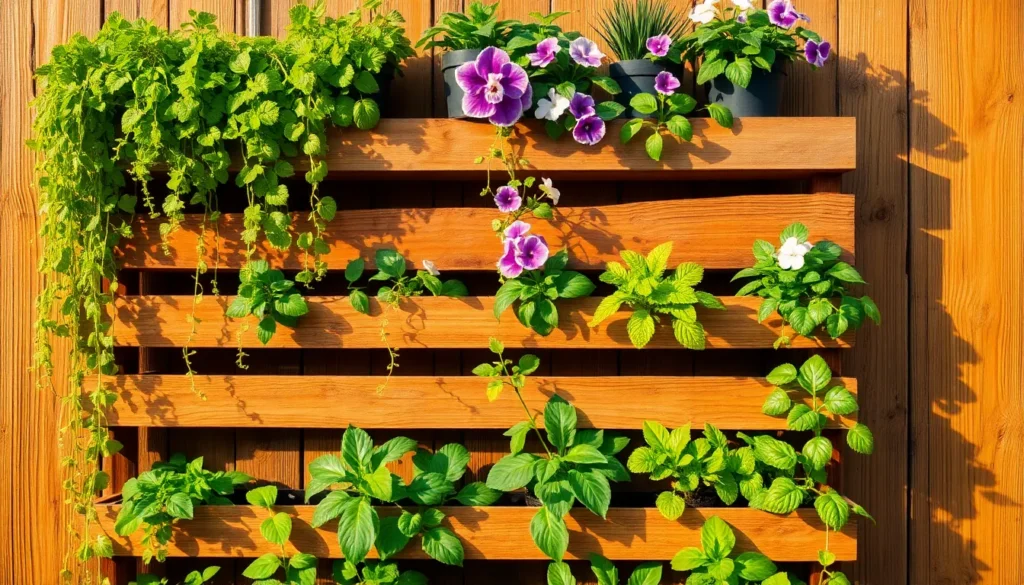Imagine transforming a blank wall or a dull corner of your home into a vibrant oasis of greenery. Vertical gardening is not just a trend; it’s a creative solution for maximizing space and bringing nature indoors, inviting both novice and experienced gardeners to explore its potential. Whether you’re living in a bustling city apartment or a spacious countryside home, vertical gardens offer a way to cultivate your green thumb without needing a traditional garden plot. The beauty of this approach lies in its versatility, allowing you to grow your favorite herbs, flowers, and even vegetables in the most unexpected places.
In this article, we’ll guide you through the steps to create your own vertical garden, making the process as enjoyable as it is rewarding. You’ll discover how to choose the best plants for your setup, understand the essential materials, and learn techniques to maintain a thriving vertical garden. From selecting the right location to ensuring proper drainage and sunlight exposure, we’ll cover all the practical aspects to ensure your vertical garden flourishes. Join us on this journey to elevate your gardening skills and enhance your home with lush, vertical greenery.
Select Suitable Wall Space
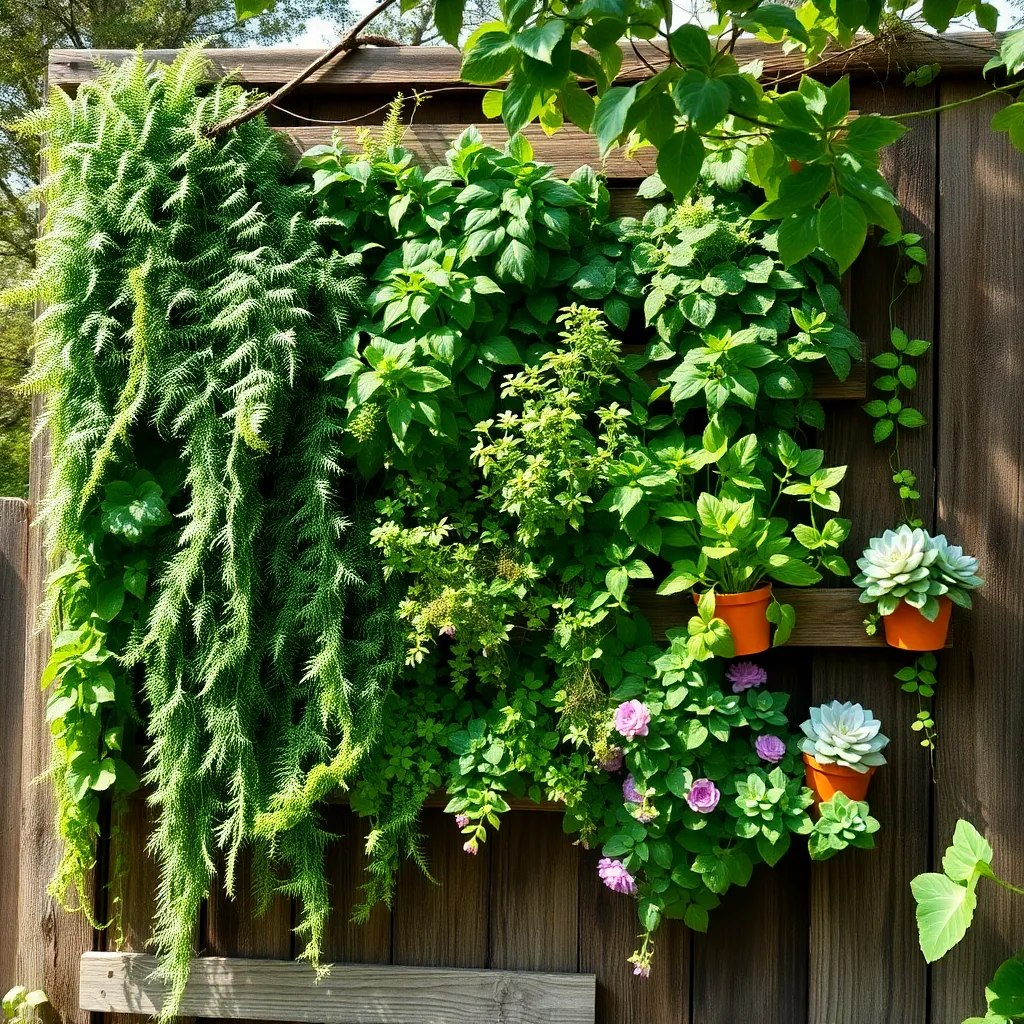
To create a successful vertical garden, it’s essential to select a suitable wall space that receives adequate sunlight. Ideally, choose a wall that gets at least 6 hours of sunlight daily for most herbs and vegetables, while some shade-loving plants may thrive with less.
Consider the structural integrity of the wall before mounting heavy planters or systems, as not all surfaces can support the weight of soil and water. Brick or concrete walls are preferable because they can handle more weight compared to drywall or wood.
Additionally, ensure your chosen wall has access to a water source for convenient irrigation, as vertical gardens can dry out more quickly than ground-level beds. Installing a simple drip irrigation system can help maintain consistent moisture levels, which is crucial for plant health.
For those in apartments or rented spaces, utilizing freestanding vertical garden frames can be a flexible alternative. These systems lean against a wall without causing damage, making them a fantastic option for renters who need a temporary solution.
Choose Appropriate Planters
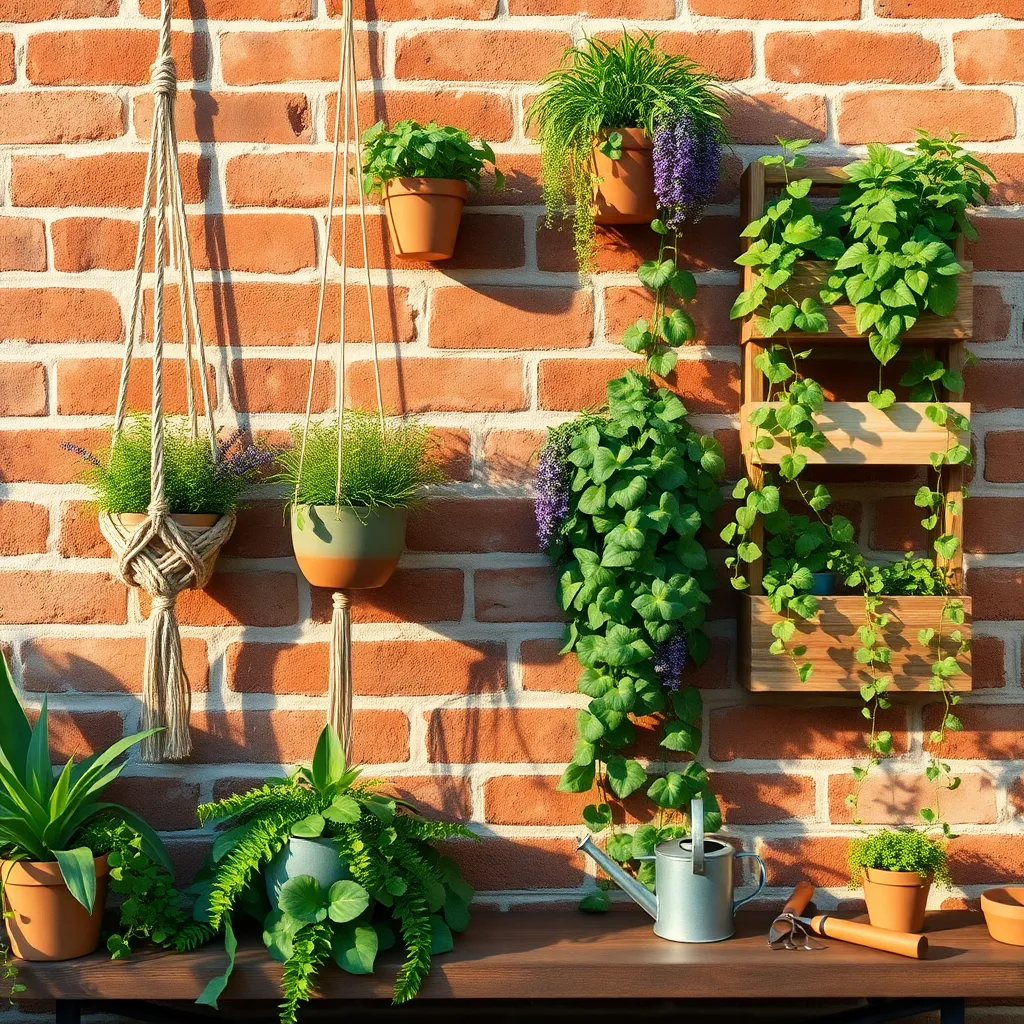
Choosing the right planters is crucial for a successful vertical garden. Consider the weight of the planters when filled with soil and plants, as your wall structure must support it safely.
Materials like plastic, fabric, and lightweight metal are excellent choices due to their manageable weight and durability. Ensure the planters have adequate drainage to prevent root rot, which can be a common issue in vertical setups.
For beginners, pre-made vertical garden kits are a great option as they often come with built-in irrigation systems. These systems help maintain consistent moisture levels, which is essential for healthy plant growth in vertical gardens.
Advanced gardeners might consider creating custom planters that fit the specific dimensions of their chosen wall space. Using a mix of planter sizes can add visual interest and accommodate plants with different root needs and growth habits.
Install Sturdy Support System
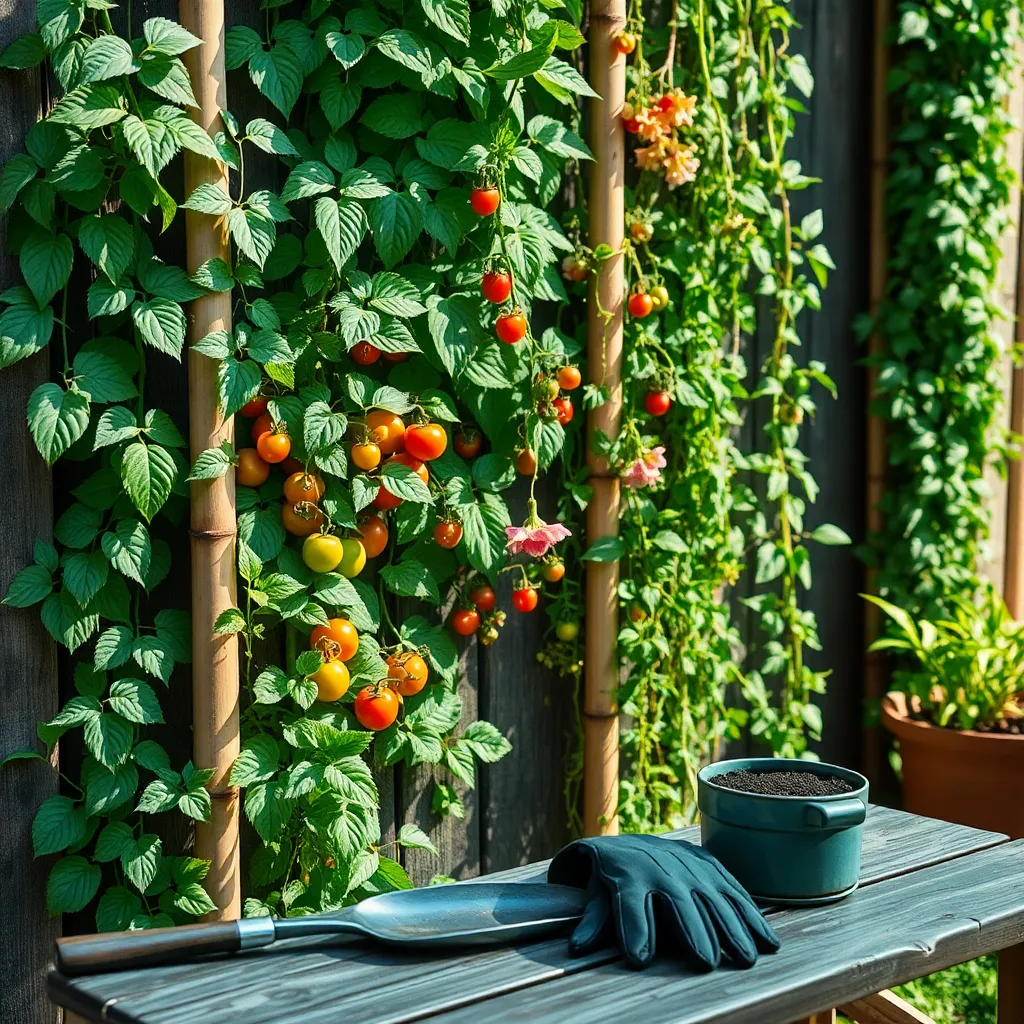
When creating a vertical garden, it’s essential to install a sturdy support system to ensure your plants thrive. This not only helps in maintaining the structure but also aids in proper plant growth and stability.
First, choose materials that are durable and weather-resistant, such as treated wood, metal, or heavy-duty plastic. These materials will provide a strong foundation for your vertical garden, especially in areas with harsh weather conditions.
Consider the weight of your fully watered plants when planning your support system. Use heavy-duty brackets and anchors to secure the structure to a wall or fence, ensuring it can bear the load without collapsing.
For beginner gardeners, starting small with a simple trellis or a grid system can be a great way to learn about plant support. As your confidence grows, you can expand to more complex systems like tiered shelves or hanging planters.
Advanced gardeners might explore using tension wire systems or modular panels that allow for easy rearrangement and customization. These systems can offer greater flexibility and enhance the aesthetic appeal of your vertical garden.
Regularly check the integrity of your support system to prevent any potential failures. Tighten any loose fittings and replace any damaged parts to maintain a safe and effective structure for your plants.
Select Vertical Garden Plants
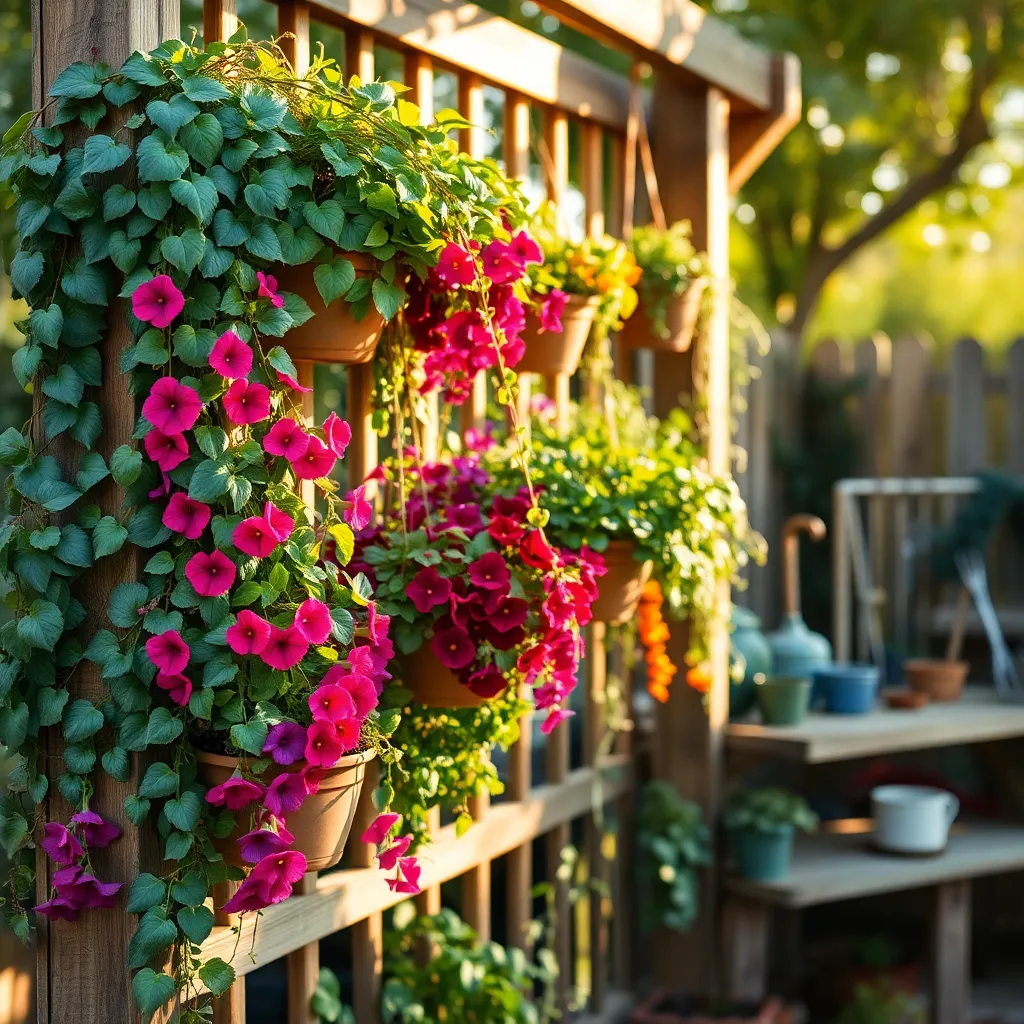
Selecting the right plants is crucial for a successful vertical garden. Begin by considering the light conditions in your space, as this will influence what plants will thrive.
Opt for plants that are naturally inclined to climb or cascade, like pothos or ivy. These plants are ideal for vertical growth, providing lush coverage with minimal effort.
For sunny locations, consider succulents or herbs such as rosemary and thyme. These plants are drought-tolerant and thrive in well-draining soil, making them perfect for vertical arrangements.
In shaded areas, ferns and philodendrons can be excellent choices. They require consistent moisture and prefer rich, organic soil to maintain healthy growth.
Advanced gardeners might experiment with a mix of edibles and ornamentals. Combining strawberries with nasturtiums not only adds visual interest but also provides a practical harvest from your vertical space.
Ensure Proper Watering Setup
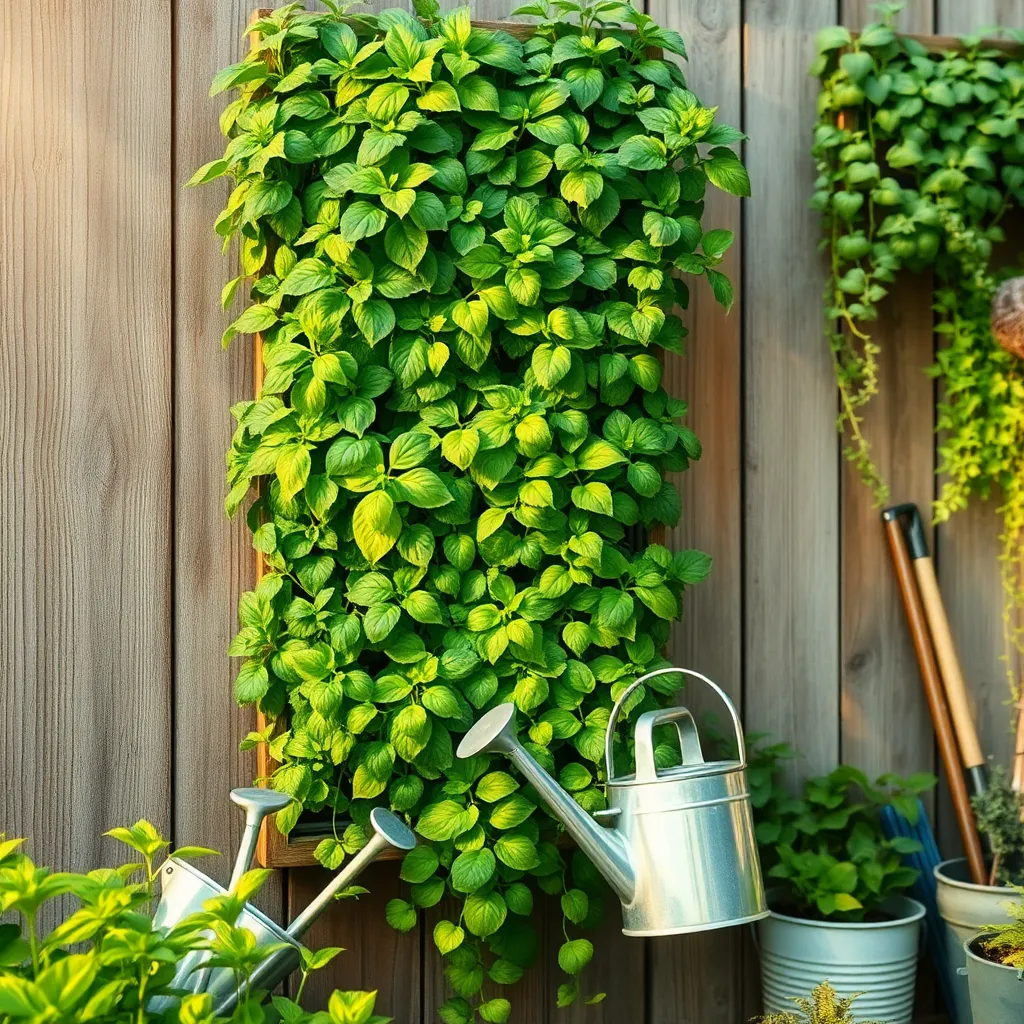
When setting up a vertical garden, establishing a proper watering system is crucial for plant health and growth. Gravity and limited soil volume can cause water to drain quickly, so you’ll need to ensure your plants receive adequate moisture.
Consider installing a drip irrigation system that delivers water directly to the roots. This method is efficient and prevents water waste, making it ideal for vertical setups where water conservation is key.
For those starting on a smaller scale, hand watering can be effective if done regularly. Use a watering can with a long spout to reach the upper levels of your vertical garden, ensuring even coverage.
Monitoring the moisture levels in your soil is essential to avoid overwatering, which can lead to root rot. Invest in a moisture meter to check soil dampness, or simply use your finger to test the top inch of soil.
Different plants have different watering needs, so it’s important to group plants with similar requirements together. Succulents and cacti will need far less water compared to ferns or herbs, which thrive in more humid conditions.
Conclusion: Growing Success with These Plants
In nurturing both plants and relationships, this article has explored the intertwined concepts of communication, commitment, creativity, nurturing, and growth. Just as each plant in your vertical garden requires specific care and attention, so too do the relationships in your life. Communication is the water that sustains them, while commitment is the soil in which they root deeply. Creativity adds color and variety, nurturing provides the essentials for thriving, and growth reflects the ongoing journey of shared experiences and mutual support.
As your actionable next step, consider starting a small vertical garden with your partner, family, or friends. It’s a wonderful opportunity to practice these relationship principles in a tangible way, fostering connection and collaboration.
Remember, relationships, much like gardens, flourish when tended with care and intention. Bookmark this article as your go-to guide for relationship and gardening success, and revisit it whenever you need a reminder of the steps to cultivate a thriving bond. Look forward to a future where your relationships, much like your garden, are vibrant, resilient, and deeply rewarding. Embrace this journey with enthusiasm and watch your connections bloom.

